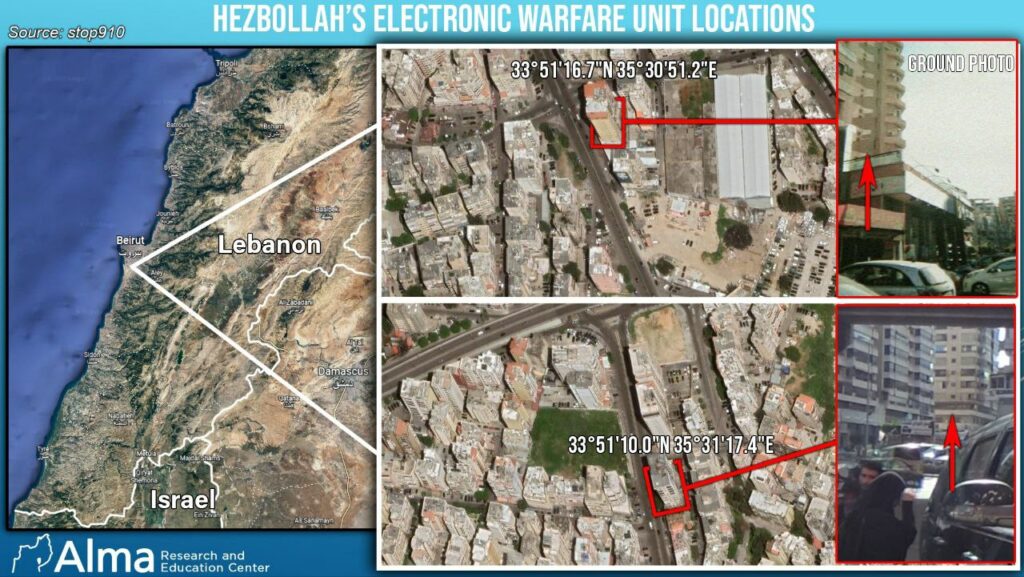In November 2023, numerous Lebanese journalists were targeted on the social media platforms Facebook and X, accusing them of collaborating with Israel. The event occurred following an IDF attack in southern Lebanon on November 5, which killed three girls and a fourth woman. Following the incident, journalists from numerous network platforms made critical posts about Hezbollah. A short time thereafter, an intensive incitement campaign against them began, which included the use of bogus accounts, trolls, activists, and other social media platforms.
Pro-Hezbollah accounts targeted journalists Dima Sadek, Rami Naim, Tony Boulos, Nadin Koteich, Layal Alekhtiar, and Charles Jabbour after they criticized the group.
Social media users shared photos of the journalists with blood smears and a Star of David, with the comment “Assisting the slaughter of children”. They received hate messages and even death threats. These journalists are known to be opposed to Hezbollah. The campaign’s purpose was to create an equation in which every anti-Hezbollah voice represented treason.

This campaign exemplifies the activity of Hezbollah’s Electronic Army, operating as part of Hezbollah’s electronic unit. Hezbollah’s Electronic Army primarily targets Hezbollah’s opponents through social media campaigns, promotes Hezbollah’s narratives, and impacts public opinion.
The electronic army runs an army of bots. The bot army is in charge of the “Simia” sub-unit. The bot army is made up of thousands of phony accounts and has broad capabilities, such as locating and labeling articles, comments, posts, and social media profiles that are deemed critical of the group or its leaders. It occasionally removes content from the network and blocks anti-Hezbollah users.
Furthermore, the army uses social media to launch smear campaigns against the organization’s critics and opponents, a strategy called “digital assassination.” The group uses this practice to restrict voices that oppose or criticize it and its leader, Hassan Nasrallah. For example, if a photo or the words Hezbollah or Nasrallah appear in an article that represents them adversely, the electronic army flags it and takes action to remove it, even by means of a cyberattack.
For the past decade, Hezbollah’s electronic army has operated training camps in Beirut, where social media activists from across the Middle East have been instructed to spread disinformation and instill fear and division in the area. These operatives originated from Iraq, Saudi Arabia, Bahrain, and Syria. They learn how to set up and administer massive networks of phony accounts, make digital films and photographs, circumvent Facebook filtering, and propagate disinformation online. A frequent strategy is to create massive networks of phony accounts that like, comment, and share each other’s postings to boost their exposure. Hezbollah can use these operatives to spread propaganda and disinformation, as well as deceive and mislead the Lebanese people and the rest of the world.
One way to identify the activists’ accounts is through their profile images, which commonly feature Hassan Nasrallah or the Iranian revolution’s leader, Imam Khomeini, or through the various Shiite party propaganda publications that they frequently distribute on their profiles.
Hezbollah’s online deception and propaganda are directed at both Lebanese and worldwide audiences. The electronic army’s targets include journalists, activists, and members of the LGBT community. The activity of the electronic army has extensive influence, sometimes even escalating to physical violence.
Hasan Shaaban, a photographer and journalist, was attacked by Hezbollah supporters in August 2022 while reporting rallies in Beit Yahon. This report contained footage of villagers condemning the “Shiite duo” Hezbollah and Amal.
Another social campaign launched by the electronic army targeted Judge Tarek Bitar, who was appointed in August 2022 to investigate the explosion at Beirut’s port. The campaign began after Bittar summoned and charged two Hezbollah politicians with involvement in the explosion. The electronic army launched a smear campaign against Bitar, using Arabic hashtags (“Bitar is out of here,” “Bitar must be replaced”), posting a slanderous photo of Bitter, and accusing him of politicizing the investigation.
The Internet has become one of Hezbollah’s tools of oppression. By controlling the debate on the Internet as well as the activities of its media platforms, Hezbollah can build its narrative and so neutralize opponents or any criticism directed at it. Hezbollah uses this strategy to intimidate opponents and compel self-censorship.
These skills pose numerous hazards to conscious subversion. By injecting content and manipulating consciousness, Hezbollah has the potential to exacerbate existing societal divides and even affect political processes. Indeed, during the economic protests in Lebanon in October 2019 and again in August 2020, following the Beirut port explosion, the electronic army worked tirelessly to spread misinformation in order to promote Hezbollah’s narrative and goals.
In conclusion, Hezbollah recognized the importance of the cognitive campaign years ago and began developing capabilities that would give it a considerable advantage in this campaign. The cognitive campaign makes heavy use of digital technologies in social networks. At the same time, psychological warfare tactics are employed, such as deception or “fake news.” Within this framework, with Iranian assistance, techniques are being developed and used to affect awareness and manipulate certain target populations.
Hezbollah’s “electronic army” continues to launch online campaigns of disinformation, division and harassment.
Sources
“How Iran Built Hezbollah Into a Top Cyber Power”, national interest, 11.04.2022,
“Lebanese photojournalist Hasan Shaaban beaten, threatened with death”, CPJ, 04.08.2022,
“Report: Freedom on the Net 2023 Lebanon”, Freedom House,
“Hezbollah’s information enabled capabilities are quiet force”, strike source, 08.03.2021,
“How Hezbollah’s electronic army is ‘assassinating’ Tarek Bitar”, lorient Today, 21.10.2021,
“Hezbollah critic Lokman Slim found dead in Lebanon”, The Guardian, 04.20.2021
“From Daesh’s Takfirism to Hezbollah’s ‘Takhuinism’”, Syria C Press, 31.12.2023,






